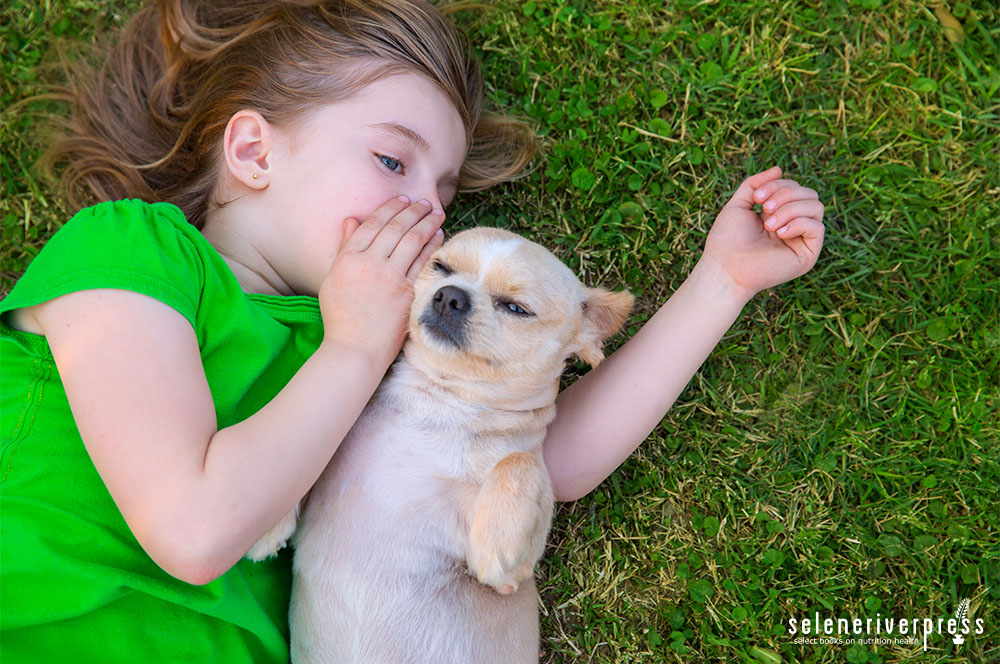If you’ve been around dogs, you know they have personalities and emotions just like people. Their personalities are unique to them and influence their feelings and emotions. To understand these emotions, it’s important to understand your dog’s body language. In addition to the sounds they make, they also send us signals through their body language—specifically their facial expressions and body postures. Let’s go through a few common body postures and the messages our dogs might be sending us.
#1 Happy
Happy dogs have relaxed eyes, eyelids, and ears. They may blink a lot, and their gaze is soft. Their body posture is stress-free rather than tense or stiff. Depending on their personality, they may hold their tail high, waggling it and wiggling their whole body. Or they may keep their tail in a more neutral position with a softer, slower wag. Some young, active dogs may play bows, raising their backsides in the air and lowering their chest to the ground in an invitation to play. Others may be content to lean into you, whether it’s when you pet them or just to connect with their body. A happy dog is pretty easy to identify.
#2. Anxious

When a dog is feeling anxious, you may notice an intense, direct stare, cautious scanning, or avoiding eye contact by frequently turning away from people or other pets. Some dogs may blink excessively or not at all. When dogs are alert or uneasy, their ears may become more erect, or they’ll lay their ears close to or flat against their head. They may close their mouth tightly or pull their lips back in a tense grimace. Unfortunately, this can indicate that a dog is preparing to move into a growl, snarl, snap or bite. An anxious dog may also vocalize as a bark, whimper, whine or growl, or make some other type of distress signal. Some will stand in one place and lift a front paw, others will shift their weight away from whatever is scaring them. They may turn their head and body away or lower their body in a cowering, slinking movement. Some may hide, freeze in place, and refuse to move. Ever-dreaded destructive behaviors are additional signs that your pet is feeling anxiety.
#3. Fearful
Fear is an instinctual feeling of apprehension resulting from a situation, person, or object that poses an external threat, whether real or perceived. Regardless of what causes the fear, the body language is usually expressed by flattened ears, tail tucked between the hind legs, cowering, lip-licking, possible yawning, raised hair on the back of the neck, avoiding eye contact, frequent scratching (when not previously itchy). I cannot stress enough that these are critical signs to be aware of as fear is an emotion that can lead to biting. One of the most common causes of biting and aggression in dogs is fear. Parents should always be on guard with small children and recognize these signs to avoid an unnecessary situation.
#4. Frustration
Frustration is defined as the feeling of being upset or annoyed, especially because of an inability to change or achieve something. Signs of frustration in dogs can include everything from barking and biting to laying down or just plain walking away, shaking, sniffing, nose licking, yawning, spinning, pacing, chattering teeth, or shaking off (dog will release stress and tension by shaking their bodies as if trying to get water off their backs). If you notice these actions, especially during training sessions, it’s a good idea to stop what you’re doing. Simply give the dog a break and continue at a later time.
#5. Pain or Discomfort
Often, our dogs suffer in silence. Because they can’t speak, it can be difficult to spot when dogs are in pain, whether as a result of injury or an underlying issue. However, there are a number of signs—some more obvious than others—that can indicate pain in dogs. These include agitation, crying out, yelping or growling, sensitivity to touch, resenting normal handling, becoming grumpy, and even snapping at you. They may be quieter or less active than normal, or they may hide. Physical changes might include a limp or reluctance to walk. Some dogs may experience depression and stop eating, or have rapid/shallow breaths and an increased heart rate. Since pain can be expressed in so many different ways, it’s important to take your dog to the veterinarian for an examination to determine where the pain is coming from, as well as the best treatment.
Researches have done many studies on canine emotions. One such study that I found fascinating is “Canine Emotions as Seen Through Human Social Cognition.” Once we determine the emotion, we can address the individual dog’s requirements, whether its additional attention, improved nutrition (of course I am a huge Standard Process advocate), or more training. A qualified veterinarian or technician can help you determine which direction is best for you and your dog.
In summary, we can better understand how our dogs are feeling by paying attention to the signals they’re sending us. Body language is best observed through the eyes, ears, posture, tail, etc. Recognizing their body language and developing a plan of action can help us build better relationships and possibly avoid unnecessary situations. For more information on canine body language, view this webinar.
Images from iStock/LUNAMARINA (main), Fly_dragonfly (laughing dog), damedeeso (dog on the phone).



